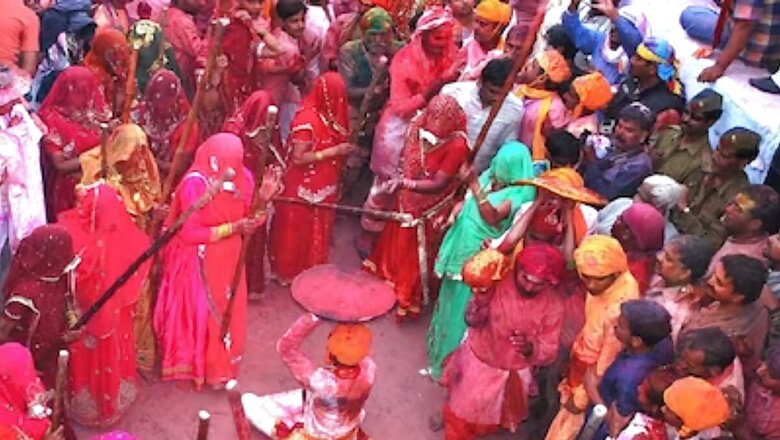
views
It’s that time of the year when people from various parts flock to the popular destinations of Uttar Pradesh – Mathura, Vrindavan and Banaras for the eagerly anticipated Braj ki Holi. Devotees of Lord Krishna converge to witness and partake in the 10-day celebration of the Holi festival. Braj ki Holi, the most renowned, attracts crowds from across the country, blending devotion with festivity.
While Holi is celebrated on March 25 elsewhere, in the Braj region, festivities commence earlier. Most are familiar with the Lath Marr Holi in Barsana, but fewer may know of Laddu Holi, another cherished tradition in the same town. Laddu Holi, steeped in history dating back to the Dwapara Yuga of the Vedas, precedes the main Holi celebrations. It involves tossing sweet prasad (Laddus), integral to ritualistic offerings.
Legend has it that an invitation to play Holi was extended from Barsana to Nandgaon, Krishna’s father’s residence and joyously accepted. During the visit, when some Gopis playfully splashed colours, the priest, lacking colours, improvised by hurling Laddus. Thus, the tradition of Laddu Mar Holi began, centred at the Shri Ji temple in Mathura Barsana.
Today, the tradition endures, with invitations sent to Nandgaon for Holi festivities. Before the revelry, Laddu prasad is offered at the Shri Ji temple, showering devotees with Laddus. Approximately 40 to 50 tons of Laddu are utilised during Laddu Mar Holi, setting the stage for the subsequent Lathmar Holi, where women wield sticks playfully at men, commencing the following day.
The essence of Braj ki Holi lies not only in its religious significance but also in its cultural heritage, seamlessly blending tradition with merrymaking. As devotees and revellers alike immerse themselves in the spirit of the festival, the timeless traditions of Laddu Holi continue to evoke the joy and camaraderie of ages past.

















Comments
0 comment